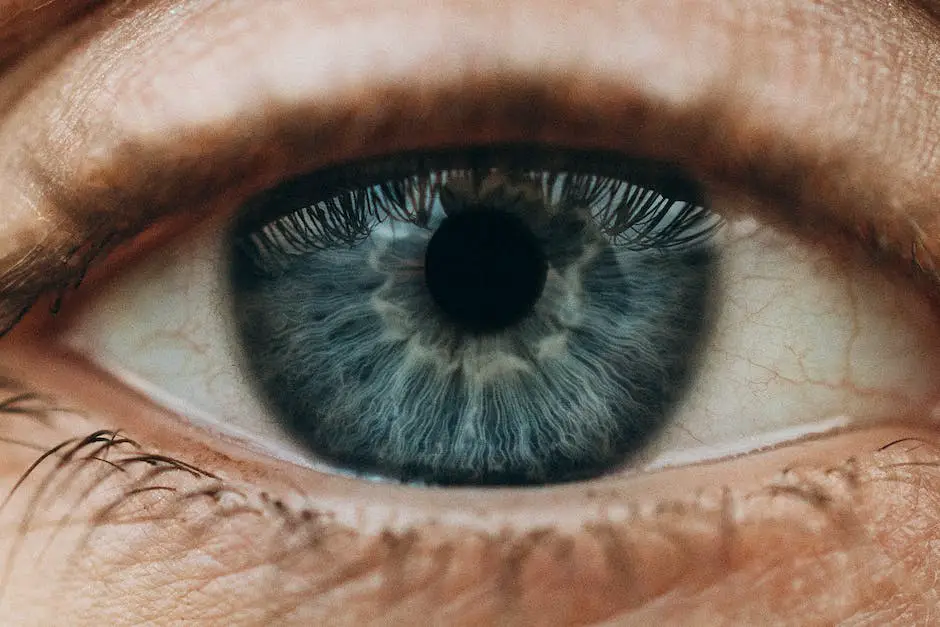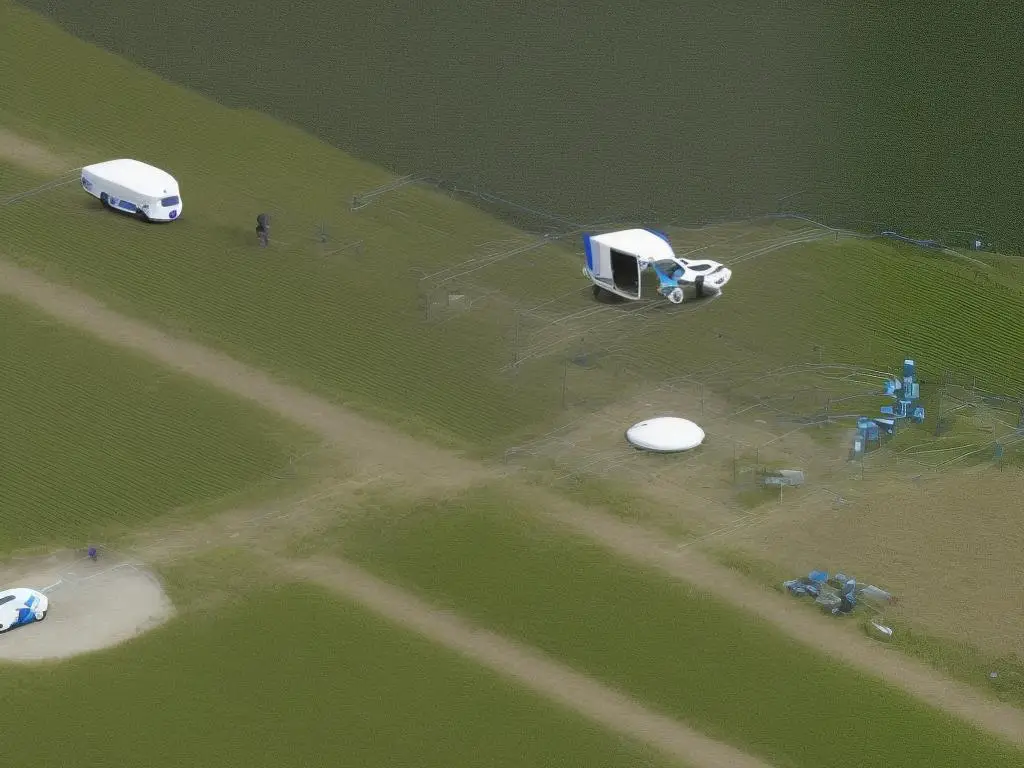Computer Vision and Image Recognition technologies have seen rapid advancements in recent years, driven by the rising power of artificial intelligence, machine learning, and deep learning techniques.
These advancements have led to a transformation of various industries, offering innovative solutions that streamline processes, enhance efficiency, and optimize human and machine collaboration.
This essay will explore the core elements of Computer Vision and Image Recognition, aiming to provide enthusiasts and hobbyists with a comprehensive understanding, valuable resources, and practical applications that can deepen their expertise in this fascinating field.
Fundamentals of Computer Vision
Table of Contents
- 0.1 Fundamentals of Computer Vision
- 0.2 Image Recognition Techniques with AgentGPT
- 0.3 Deep Learning for Computer Vision
- 1 Deep Learning Frameworks for Computer Vision with AgentGPT
- 2 RNNs and Video-Based Computer Vision
- 3 Object Detection and Segmentation with Deep Learning
- 4 Exploring Generative Adversarial Networks (GANs) in Computer Vision
Computer vision is a field of study that focuses on enabling machines to interpret and understand the visual world by extracting useful information from images and videos. This process involves acquiring, analyzing, and processing visual data to enable a wide range of applications, such as object recognition, navigation, and 3D reconstruction.
The goal of computer vision is to mimic the human visual system’s ability to extract meaning from visual information and use it to make decisions or perform tasks.
One of the fundamental aspects of computer vision is image acquisition, which refers to the process of capturing images from the real world using cameras or other image capturing devices. This plays a crucial role in shaping the overall quality of the captured images and determines the level of detail and accuracy that can be achieved in the subsequent stages of computer vision techniques.
Image representation, on the other hand, focuses on how the captured images are stored and manipulated, usually in the form of digital matrices or arrays, to facilitate further processing and analysis.
Image processing techniques form the backbone of computer vision applications, as they involve transforming and analyzing images to extract relevant features, identify patterns, and achieve various goals, such as object recognition or image segmentation.
Some common image processing techniques include filtering, edge detection, and morphological operations. These algorithms allow the development of robust and efficient computer vision systems that can handle variations in scale, orientation, and lighting conditions.
One of the critical components in computer vision is the identification of local features, such as edges, corners, or regions, which provide relevant information about the content of an image. These features are essential for many tasks, including object recognition, image stitching, and tracking.
Feature extraction methods, such as the Scale-Invariant Feature Transform (SIFT), the Oriented FAST and Rotated BRIEF (ORB), or the Histogram of Oriented Gradients (HOG), are commonly used to identify and describe such features in a way that is invariant to changes in scale, rotation, and illumination.
Machine learning, and more recently, deep learning techniques have become indispensable in computer vision, providing state-of-the-art performance in various tasks, such as object recognition, segmentation, and image synthesis. Convolutional Neural Networks (CNNs) have emerged as the go-to approach for tackling complex computer vision problems, thanks to their ability to learn hierarchical representations and capture spatial dependencies in images automatically.
This has led to remarkable advancements in the field and has further widened the scope of potential applications, including facial recognition, autonomous vehicles, and image-based diagnostics in medicine.

Image Recognition Techniques with AgentGPT
Within the realm of computer vision, there are various techniques and methodologies designed to enhance image recognition processes. Among these methods, convolutional neural networks (CNNs) stand out as a unique and powerful deep learning architecture specifically tailored for handling image input.
Their impressive success in image classification and feature detection can be attributed to their structure, which typically includes multiple layers of convolution, pooling, and fully connected layers.
This specialized architecture allows for efficient processing and handling of image data, seamlessly connecting with the advancements in machine learning and deep learning techniques, ultimately driving innovation in fields such as facial recognition, autonomous vehicles, and medicine.
Another widely used image recognition technique is the support vector machine (SVM), which is a type of supervised learning model often employed in classification and regression tasks.
The basic principle behind SVMs is to discover a hyperplane that optimally separates data points belonging to different classes. In image recognition tasks, SVMs can be used to classify images based on various extracted features, such as color histograms, orientations, and textures. In some cases, SVMs are combined with CNNs or other methods, to improve the image recognition process further.
Feature extraction techniques play a crucial role in image recognition, as they reduce the complexity of raw image data and convert it into more manageable and meaningful representations. Some common feature extraction methods include Scale-Invariant Feature Transform (SIFT), Speeded Up Robust Features (SURF), and Histogram of Oriented Gradients (HOG). SIFT and SURF are both used to detect and describe local features in images, while HOG aims to capture the overall structure of an object or scene by considering the distribution of edge directions.
These techniques enable the formation of discriminative feature vectors that can be used for classification and object recognition tasks.Handling large-scale datasets is one challenge that often arises when working with computer vision and image recognition techniques. As the quantity of data increases, it becomes more difficult to manage, store, and process the information efficiently.
This has led to the development of more scalable deep learning architectures and various data pre-processing and augmentation techniques. Additionally, the use of specialized hardware, such as Graphics Processing Units (GPUs) and Tensor Processing Units (TPUs), has allowed for faster computation and improved performance.
The rapidly growing field of computer vision and image recognition has led to an increased focus on addressing common challenges and further improving existing methodologies. Researchers continuously explore new techniques and approaches, such as Generative Adversarial Networks (GANs) and capsule networks, in order to enhance the recognition process and achieve better results.
As this technology continues to advance, we can expect even greater strides toward the development of more accurate, efficient, and robust image recognition systems.

Deep Learning for Computer Vision
Deep learning, in particular, has revolutionized computer vision and image recognition, enabling the creation of robust and accurate systems for various applications. Convolutional Neural Networks (CNNs) are one of the core deep learning techniques specifically designed to work with image data.
These networks consist of multiple layers, including convolutional, pooling, and fully connected layers. Together, these layers empower CNNs to automatically learn spatial hierarchies of features from input images, ultimately leading to effective image understanding.
This process makes CNNs suitable for a wide range of tasks, such as object recognition, segmentation, tracking, and classification. As enthusiasts and hobbyists, understanding and developing expertise in these innovative techniques will enable you to become highly skilled in computer vision and image recognition.
Deep Learning Frameworks for Computer Vision with AgentGPT
Several deep learning frameworks have emerged as useful tools for implementing and training CNNs, and other deep learning models. TensorFlow, developed by Google, and PyTorch, developed by Facebook, are two popular frameworks that provide simple and efficient ways to build, train, and deploy deep learning models.
These open-source platforms provide numerous pre-built components, enabling enthusiasts and hobbyists to quickly prototype and experiment with different architectures for computer vision tasks. Additionally, they boast extensive documentation and active communities, making them accommodating for beginners.
RNNs and Video-Based Computer Vision
Recurrent Neural Networks (RNNs), another popular deep learning model, have shown significant improvements in sequence modeling and time series analysis. RNNs can be combined with CNNs for video-based computer vision tasks, as they can effectively process the temporal information present in video frames.
This combination, known as Convolutional LSTM (Long Short-Term Memory) networks, is used for various applications like video segmentation, object tracking, and human activity recognition.
Object Detection and Segmentation with Deep Learning
When working with large-scale and high-resolution images, object detection and segmentation can be quite challenging due to computational requirements and complex object interactions. To address this, deep learning approaches like Mask R-CNN and U-Net have been developed.
Mask R-CNN extends the concept of Faster R-CNN by adding a parallel branch for predicting segmentation masks, while U-Net is specifically crafted for biomedical image segmentation. Both techniques are widely used for their effectiveness and can be easily implemented using popular deep learning frameworks like TensorFlow and PyTorch.
Exploring Generative Adversarial Networks (GANs) in Computer Vision
Generative Adversarial Networks (GANs) have emerged as game-changers in the field of computer vision and image recognition, bringing unique capabilities to these tasks. GANs, consisting of two neural networks—a generator and a discriminator—work through an adversarial training process.
The generator’s aim is to create realistic images or samples that can fool the discriminator, which in turn tries to differentiate between generated and real images.
GANs have been employed in various tasks, such as image synthesis, inpainting, and style transfer, thus expanding the possibilities and applications of deep learning-based computer vision techniques.

Popular Computer Vision Libraries
OpenCV, one of the most popular computer vision libraries, serves as an essential resource for researchers and developers worldwide due to its versatile tools and functions. Written in C++, OpenCV is highly responsive in processing images quickly and efficiently.
Known for its real-time computer vision applications, OpenCV includes features such as object detection, facial recognition, and object tracking. Its extensible nature allows developers to extend its functionality, making it an ideal choice for a variety of computer vision projects.
Complemented by an extensive community of supporters, OpenCV’s potential for growth and optimization is ever-evolving. By combining the power of GANs and tools offered by OpenCV, enthusiasts and hobbyists like yourself can attain mastery in computer vision and image recognition, ultimately exploring new frontiers in deep learning-based techniques.
Another popular computer vision library is ImageAI, a powerful Python library explicitly designed for ease of use and flexibility. It provides state-of-the-art machine learning algorithms with only a few lines of code, making it attractive to hobbyists and developers who want to quickly prototype and deploy their computer vision applications.
ImageAI supports numerous pre-trained models for object detection, image recognition, and video analysis. Its user-friendly interface enables developers to incorporate the latest machine learning techniques into their projects without the need for extensive knowledge or training.
SimpleCV is another widely used computer vision library that prioritizes ease of use and ensures compatibility with various platforms. Developed as an open-source Python interface designed for beginners, SimpleCV offers ready-to-use functions for image processing, feature extraction, and object classification.
It promotes fast development cycles, providing a simplified approach to many complex computer vision tasks. SimpleCV supports an extensive range of image formats and is compatible with various camera interfaces, making it a valuable tool for individuals looking to explore computer vision and image recognition.
In practical applications, computer vision libraries have proven their value across various industries. For instance, OpenCV has been employed in autonomous vehicles for real-time object detection and tracking, ensuring safe navigation.
ImageAI has been utilized in medical diagnostics to help classify and identify different types of cancerous cells. SimpleCV has found its place in the agricultural sector, where it is utilized for plant disease detection and crop yield prediction, assisting farmers in making informed decisions.
Enthusiasts and hobbyists exploring the realm of computer vision and image recognition often find themselves working with popular computer vision libraries. These libraries serve as essential building blocks for developing complex applications in various fields, such as healthcare, agriculture, and security.
With their ease of use and powerful capabilities, these libraries enable hobbyists and developers to experiment with computer vision techniques, thus pushing the boundaries in the field. As these libraries continue to evolve and improve, their applications and impact across industries are bound to increase as well.

Photo by clemhlrdt on Unsplash
Real-world Applications of Computer Vision
One of the most significant applications of computer vision and image recognition can be found in the development of autonomous vehicles. These advanced systems rely on perceiving and understanding their surrounding environment, enabling vehicles to identify traffic signs, pedestrians, and other vehicles with exceptional precision.
By analyzing images captured from various sensors like cameras and LiDAR, self-driving vehicles can make informed decisions regarding speed, direction, and interactions with other road users. Not only does this technology improve road safety, but it also possesses the potential to alleviate traffic congestion and minimize fuel consumption.In the security and surveillance industry, computer vision and image recognition play a crucial role in automating threat detection and monitoring processes.
With advances in facial recognition and object detection algorithms, it is now possible to effectively monitor public spaces, identify criminals, and track suspicious behavior in real-time. By utilizing these technologies, law enforcement agencies can swiftly respond to potential threats and ensure a safer society.The healthcare sector is another domain where computer vision and image recognition technologies have made significant strides.
They are increasingly being used to assist medical professionals in analyzing medical images, such as X-rays, MRIs, and CT scans, to identify abnormalities and diagnose diseases more accurately. For instance, AI-powered tools based on computer vision algorithms can help detect cancer at early stages, thus improving patient outcomes and reducing the need for invasive procedures.
Additionally, these technologies can be used in robotic surgery, allowing for precise and minimally invasive procedures.In manufacturing, computer vision and image recognition are transforming the way quality control and inspection processes are conducted. Traditionally, these tasks were carried out manually, which can be both time-consuming and prone to human error.
Today, computer vision-powered systems can rapidly and accurately inspect products, parts, or assembly lines for defects and inconsistencies. Automated systems equipped with cameras can capture images of the products and use image recognition algorithms to compare them against pre-defined standards, ensuring optimal quality and reducing the amount of resources required for manual inspections.
The agriculture industry is undergoing a revolution with the adoption of computer vision and image recognition technologies. Farmers now have access to drones equipped with cameras and AI-based image recognition software, allowing them to monitor crop health, detect pests, and analyze the vitality of their fields.
This invaluable data helps increase crop yields, optimize resource use, and minimize environmental impact. Moreover, these technologies can be integrated with agricultural machinery, such as tractors and harvesters, to automate certain tasks and improve overall productivity.

Computer Vision Project Tutorials
To become proficient in computer vision and image recognition, enthusiasts and hobbyists can greatly benefit from computer vision project tutorials. These step-by-step guides provide hands-on experience in building various computer vision projects, enabling learners to quickly grasp essential concepts and apply them in real-world situations.
From setting up development environments to deploying trained models, these tutorials cover all the necessary steps for a successful project, making them the perfect tools for those eager to enhance their skills.
One important aspect of these tutorials is the customization of projects based on specific requirements. As the needs and objectives of computer vision projects can vary greatly, it’s essential to learn how to customize and adapt different elements.
For example, modifying the recognition algorithm to better identify certain objects or making changes to the image processing pipeline for improved performance. These tweaks and adjustments allow learners to tailor their projects to their unique interests and goals, ultimately enabling mastery in computer vision and image recognition.
Optimization of recognition and processing techniques is another critical aspect covered in these tutorials. As computer vision and image recognition tasks can involve the processing of large amounts of data, it’s essential to optimize techniques for fast and efficient processing.
By learning about various optimization strategies, learners can enhance their computational resource usage and achieve their desired outcomes within the imposed constraints, such as limited hardware capabilities or real-time processing requirements.
Furthermore, these computer vision project tutorials allow learners to gain hands-on experience with various tools, frameworks, and libraries available in the field. By working with different software solutions, such as OpenCV, TensorFlow, or PyTorch, learners can develop a comprehensive understanding of the available tools. This exposure also allows them to make informed decisions when selecting the most suitable option for their projects, ensuring better performance and compatibility.
In summary, computer vision project tutorials provide invaluable resources for enthusiasts and hobbyists seeking to become proficient in computer vision and image recognition.
These tutorials offer step-by-step guidance, customization tips, and optimization strategies, empowering learners to develop essential skills and knowledge in the field. Furthermore, hands-on exposure to various tools and frameworks ensures that learners are well-prepared to tackle future computer vision challenges and contribute to the ever-evolving landscape of the technology.

Ethics and Challenges in Computer Vision
As learners gain expertise in computer vision and image recognition, they also encounter ethical challenges and dilemmas inherent in this rapidly expanding field, such as privacy issues, biases in algorithms, and cultural implications.
Addressing these ethical considerations is crucial as image recognition technology becomes increasingly integrated into various aspects of society. Concurrently, researchers in the field must continue to overcome challenges like hardware limitations, limited training data, and algorithmic diversity, ensuring a responsible and effective development of computer vision applications.
Privacy concerns are among the top ethical issues in computer vision. The widespread use of surveillance cameras, social media platforms, and smart devices has led to a significant increase in the capture and storage of images and videos, many of which may include personally identifiable information.
This raises concerns about potential misuse of data, as well as the possibility of unauthorized access and distribution. Additionally, facial recognition technologies have introduced further complications, as individuals may be identified and tracked without their consent.
Addressing these concerns will require ongoing dialogue regarding the responsible use of computer vision in various settings, particularly as it pertains to balancing individual privacy rights with potential benefits for society at large.
Bias in algorithms also presents a noteworthy ethical challenge in computer vision. Machine learning models rely on data to learn patterns and make predictions. However, if the training data is not diverse and representative of various populations, the resultant algorithms can be biased, leading to unfair outcomes.
For example, facial recognition technology has been shown to have higher error rates in identifying people of certain demographic groups, stemming from biased training data.
To combat bias, researchers must prioritize the use of inclusive, diverse, and unbiased training datasets, as well as develop methods for identifying and mitigating algorithmic bias in existing computer vision systems.
Cultural implications are another important aspect of ethical considerations in computer vision. As this technology becomes more pervasive, there is an increasing danger of it being used to perpetuate or deepen cultural and social divides.
For instance, computer vision algorithms could be employed to automatically flag or censor content based on cultural norms or biases, leading to the suppression of certain voices or reinforcing harmful stereotypes.
Addressing these cultural challenges will require developers to work closely with stakeholders from different cultural backgrounds, in order to ensure that the technology remains respectful and sensitive to diverse perspectives and values.
In parallel to these ethical considerations, researchers in the field of computer vision face a number of technical challenges in their quest for improved image recognition capabilities. One such challenge is hardware constraints, as image recognition algorithms often require significant computational power for both the training and inference phases.
This can be especially problematic for real-time applications or when deploying these systems on devices with limited resources, such as smartphones. Furthermore, limited training data can hinder the development of robust and accurate models—a challenge that may demand the exploration of novel data augmentation techniques or the leveraging of synthetic data.
Finally, algorithmic diversity is an important challenge that must be addressed by researchers, as relying on a single model or approach may not yield optimal results for a variety of use cases.
Encouraging the development and adoption of a diverse range of algorithms will help ensure that computer vision technologies continue to improve and become more versatile, ultimately better serving a wider range of applications and users.

As the world continues to embrace the power of technology, the importance of Computer Vision and Image Recognition in our daily lives can only be expected to grow.
By understanding the fundamentals, techniques, libraries, applications, and ethical considerations of this field, enthusiasts and hobbyists can position themselves at the forefront of its development and innovation.
Summing it up, this essay provides a solid foundation for embarking on a successful and rewarding journey in the realm of Computer Vision and Image Recognition, with the potential to revolutionize industries and create a positive impact on society.

I’m Dave, a passionate advocate and follower of all things AI. I am captivated by the marvels of artificial intelligence and how it continues to revolutionize our world every single day.
My fascination extends across the entire AI spectrum, but I have a special place in my heart for AgentGPT and AutoGPT. I am consistently amazed by the power and versatility of these tools, and I believe they hold the key to transforming how we interact with information and each other.
As I continue my journey in the vast world of AI, I look forward to exploring the ever-evolving capabilities of these technologies and sharing my insights and learnings with all of you. So let’s dive deep into the realm of AI together, and discover the limitless possibilities it offers!
Interests: Artificial Intelligence, AgentGPT, AutoGPT, Machine Learning, Natural Language Processing, Deep Learning, Conversational AI.

